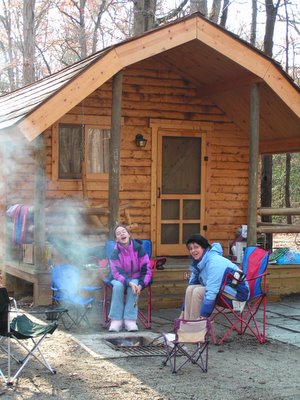Remarks to NVRPA Headquarters Staff
By Paul Gilbert on July 18, 2005
While many of our already know me, for those that do not my name is Paul Gilbert and I am the new Executive Director. I am very excited to work for such a great organization.
For five years I have been on the Park Authority’s Board, as one of the Fairfax County representatives, as a result I am very familiar with our parks, and our financial strengths and weaknesses. We have a fantastic organization, one that really serves the public well. Mr. Mess and the other founders of the Authority were true visionaries when they set up this agency on the regional model.
As the new Executive Director, I am looking forward to working with you on expanding the Authority. I would like to see us enter a new era of growth, where we are expanding our land holdings, our facilities and our programs. My guess is most of us would like to be part of a growing organization, where new ideas are encouraged, and where we all strive to achieve our goals and vision in the most efficient and effective manner.
As you may know, I was formerly the President of the Northern Virginia Conservation Trust. This was a private non-profit organization with a mission to conserve land. We conserved sixty properties throughout Northern Virginia, including about 800 acres that buffered public parkland. While our focus was natural areas, I have also been involved in some significant historic preservation efforts.
Several years ago, I initiated a recreational component of the Trust called “Adventures in Conservation” that includes regular kayak tours, guided hikes, birding, tree planting and other hands-on activities. This is all just to say, the mission of the Conservation Trust and the Park Authority are very similar: outdoor recreation and conservation of our natural and historic resources.
Another similarity is that the Conservation Trust is partially funded by Fairfax, Arlington and Alexandria. So I am very familiar with the local governments of many of our member jurisdictions.
Before the Trust, I spent almost a decade in private industry, and before that I worked in State Government. So I have been a part of large organizations as well as small.
My management style is to have clear job descriptions and mutually agreeable performance expectation. Then my job is to see that you have the necessary tools and resources to do your job effectively. And your job is to meet or exceed those performance expectations. I am not a micro-manager. I am here to keep the organization focused on achieving its mission and goals as well as to help to you, when you need it.
Finally, I want to congratulate all of you for helping to turn an important corner for the Park Authority. Last year at this time we were about $400K in the red, and the year before that we were close to $200K in the red. The good news is that you have just ended FY’05 with a surplus! That kind of turn around is big news. We owe a lot to good weather this spring, but we also owe a lot to the hard work of everyone at the Park Authority. As a result of your good performance, the Board has approved a 3% COLA increase for everyone!
We are not totally out of the woods yet. We will need to put a significant amount of our surplus back into our reserves that we tapped last year to make ends meet. We need to find new sources of revenue, so we are not so vulnerable if there is a season or two of bad weather. If you have any ideas about how the Authority can bring in more revenue, or other issues related to the Authority, I am very interested in hearing them.
I am truly excited at the opportunity to work with you, and continue to grow this great organization.


 The battle of Balls Bluff near Leesburg took place earily in the Civil War. When some of the dead solders from this conflict floated down river to Washington, it was one of the first times many of the political elite of the time realized that this would not be a quick or easy war.
The battle of Balls Bluff near Leesburg took place earily in the Civil War. When some of the dead solders from this conflict floated down river to Washington, it was one of the first times many of the political elite of the time realized that this would not be a quick or easy war.
